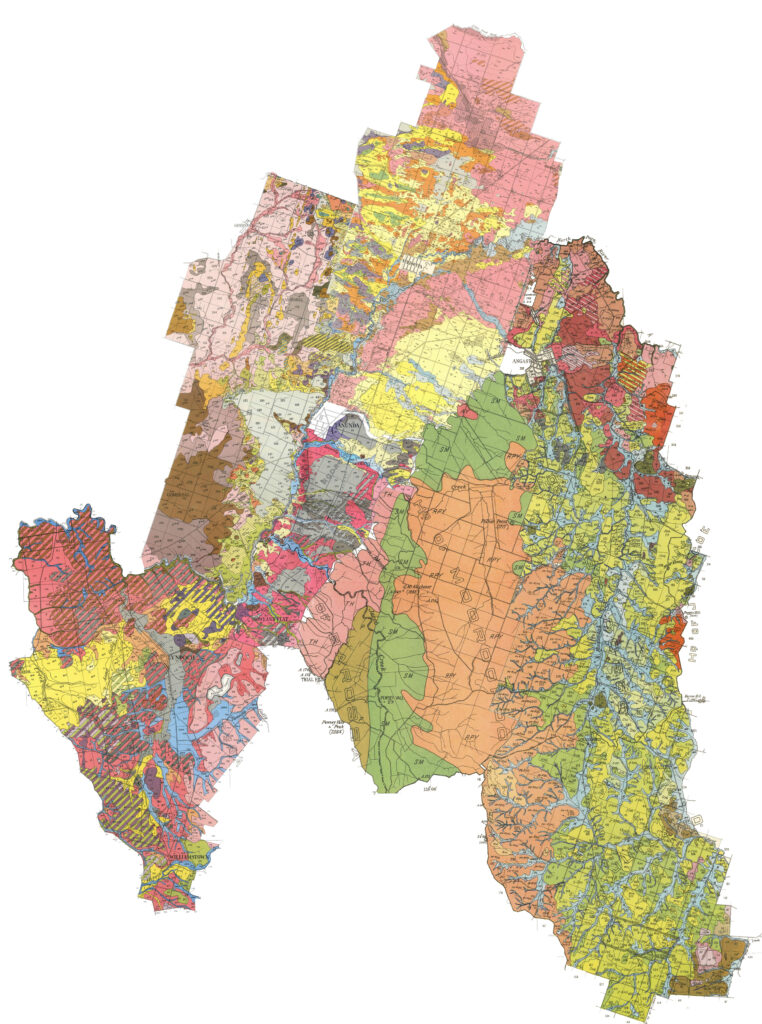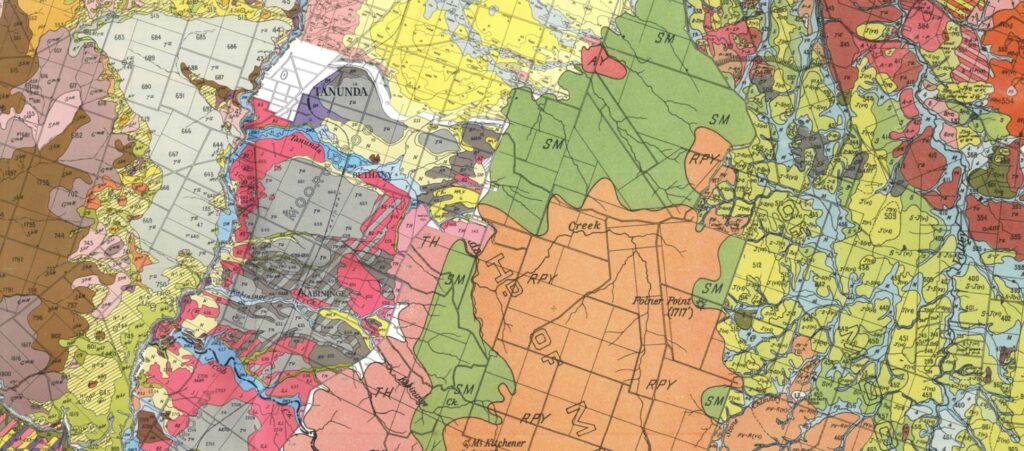For a dozen or so years now I have spent many happy days digging holes, chipping rocks, and studying the landscapes of a large number of Australian and New Zealand vineyard regions. The object is to try and understand what role things like soils, rocks, and the shape of the landscape, play in the role of creating wine flavours. This is an area French winemakers are very keen on and goes under the general topic of ‘terroir’.
I also then try to understand how the landscape has evolved over the last ten million or so years. Left behind from long ago are clues of how the land surface once was and perhaps the type of climate. My ramblings on these topics can be followed on Glug under this section, Regional Studies & Terrior.
Recently I was asked to give a talk on the soils of the Barossa. Fortunately five very detailed studies are available which were done by the CSIRO in the 1950s by Northcote, Wells, De Mooy and others. I could not locate a map that combines all of these studies so my colleague Ben went to work and created this quite beautiful map. Two of the studies are works of art, these being the map to the far right showing the drainage of Eden Valley created by the north flowing North Para River and the top map that extends north from Nuriootpa which is the famous map by Northcote.

The soil divisions from one region to the next, because they were mapped by different teams, do not necessarily join, so this ensemble needs adjusting and then brought up to modern usage. I have commenced this task and will add some revisions and new areas not covered by these original surveys. Still that is a way off and I thought this work is so lovely that you would enjoy seeing it even if you have no interest at all in soils. This really is science at its best.
It is from base maps such as this plus landscape division maps that are derived from this sort of data that winemakers in the future may divide the Barossa into smaller sub-regions. Thus when you see Ebenezer, Greenock, Light Pass or Lyndoch on a label you will know the wine has been isolated because of the subtle difference in flavour. This though is a fair way off and there will never be boundaries only gradations between sub-regions.
Sadly I have begun to downgrade the role of soils, rocks and landscapes in my views of what creates the subtlety of wine flavours and greatly upgraded the role of meso and macro weather patterns so I now spend time reading about weather systems. Damn, just when I was getting a handle on the landscape business.
